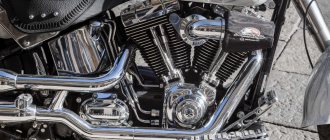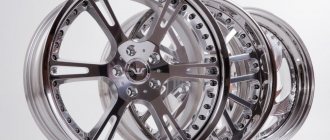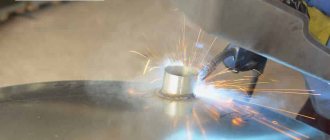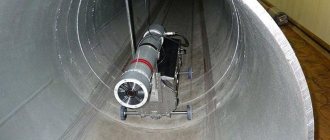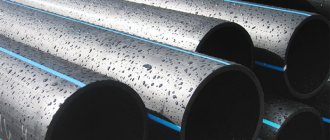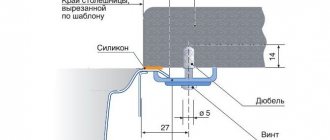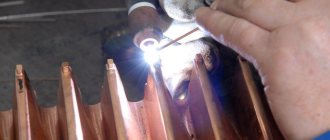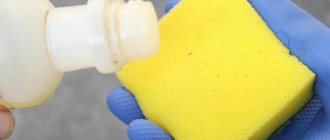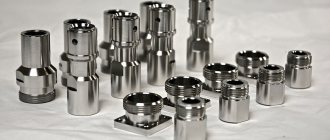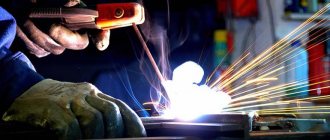Chrome is a metal that is characterized by good strength, pleasant appearance and high corrosion protection. In practice, products made from pure chromium are rarely used due to the high cost of the metal (difficult mining, difficult beneficiation). Therefore, this chemical element is usually applied in a thin layer to other metals, stone, plastic, wood and other materials. This allows you to improve the physicochemical and aesthetic properties of the workpiece for a relatively small amount. In metallurgy, the procedure of applying a thin layer of chromium is called chrome plating.
Various products can be coated with chrome - work tools, car wheels, equipment for ships, dishes, decorative items. Chrome plating can be performed in various ways, and today there are more than 10 such methods (although in practice 3-4 chrome plating technologies are used). But is chrome plating possible at home - or is it only carried out in factories and factories? What are the features of chrome plating of plastic? And what safety rules should you not forget about? These issues will be discussed in the article.
General information
The thickness of the coating layer is usually small - from 0.2 to 0.8 millimeters (although there are products with a thicker layer). Any metals and their alloys (iron, cast iron, steel, aluminum, copper and others), as well as dielectrics (plastic, stone, wood, porcelain and others) can be chrome-plated.
You can coat dishes, jewelry, car or motorcycle parts, and furniture with chrome. In addition, chrome plating of parts and plastic performs the following important functions:
- Thermal and mechanical protection. Chrome has a dense structure and a very high melting point. Therefore, when heated, its chemical and physical structure does not change. During a mechanical shock, the substance also retains its structure, so chrome-plated parts have higher mechanical resistance.
- Anti-corrosion protection. From a chemical point of view, chromium is an inert substance. Under normal conditions, it does not come into contact with water and atmospheric air. Therefore, products with chrome coating do not corrode for a long time. Chromium also reacts reluctantly with acids, alkalis and salts.
- Restoring the strength of a spare part. In case of long-term use, small cracks and depressions appear in spare parts, which negatively affects their strength and reliability. Applying chrome plating can seal these cracks and dents, improving their practical use.
- Protects against dirt and increases reflectivity. The chrome coating reliably protects the part from dirt, dust and organic debris. People cover the spare parts of their vehicles so that their vehicles are better visible in the dark (usually discs, individual parts or the entire body are covered).
Where is chrome plating done?
Most chrome plating technologies are complex operations that require special equipment. During coating application, harmful substances may be released into the atmosphere that pose a danger to humans if inhaled. Small doses of fumes have little effect on health, but the coating takes a long time to apply, so it is imperative to think about protecting the body. Typically, chrome plating is applied in special technological workshops, where equipment is installed to remove harmful fumes, and people themselves wear protective suits.
However, if you follow a number of rules, you can perform chrome plating at home. To carry out the work you will need additional tools and equipment. We list the main ones:
- Individual protection means. This is a tight protective suit, a respirator mask and goggles that fit tightly to the face. These products will protect the body from contact with harmful substances that are in the air. Both the skin and mucous membranes, as well as the respiratory organs, are protected. After applying the coating, the suit, mask and goggles must be cleaned to remove any particles of harmful substances that may have settled on them.
- Exhaust equipment. This may include exhaust fans or similar equipment. The main task that such fans perform is to collect and remove from the room harmful fumes that are formed during chrome plating. The power of such fans should not be too high, since not many harmful substances are generated (except for the processing of large products of complex shape, when a large number of consumables that emit harmful fumes are required).
Cathodic mechanical chrome plating (galvanic honing).
An analysis of modern literary sources covering the issues of intensification of chrome plating processes, as well as modern Russian chrome plating technologies, has shown that applying shiny chrome coatings to cylindrical parts or rod-type parts made from a standard sulfate electrolyte at current densities of 3000-6000 A/m2 and electrolyte temperatures of 45 -70 °C allows the technology of cathodic mechanical chromium plating (CMC) or galvanic honing. This technology was developed by specialists from the Federal State Unitary Enterprise “TsNIIM” (St. Petersburg).
KMH technology involves chrome plating of cylindrical parts with a simultaneous mechanical (abrasive) effect on the cathode surface, that is, combining the chrome plating process with honing or lapping the surface with special polishing elements. According to developers' estimates, the wear resistance of chrome coatings obtained using the CMC technology, compared with coatings obtained by standard chrome plating of cylindrical parts, increases by 2-4 times [4]. In addition, the use of cathodic mechanical chromium plating makes it possible to obtain thick-layer chrome coatings (thickness over 100 microns) with a roughness corresponding to high classes of surface finish (not lower than class 9) without intermediate mechanical treatment.
The essence of the galvanic honing process is a constant forced adjustment of the surface formation during the chrome plating process with polishing elements. This makes it possible to prevent the enlargement of irregularities with increasing thickness of the deposit on the surface being formed, to prevent uneven distribution of the coating over the thickness, and to preserve the fine-crystalline structure of the chromium deposit (maintaining the conditions of a flat growth front of the deposit). In other words, with the CMC technology, a forced “smoothing” of the forming and growing layer of chromium deposit is performed at the microscopic level.
The conclusions of KMH development specialists from the analysis of the main chromium plating technologies existing in Russia for cylindrical long parts of the “rod” type indicate the following:
• With standard chrome plating of cylindrical parts, in order to achieve the required class of surface finish, mechanical chrome finishing of the surface is required (using expensive equipment), which, as a rule, reduces the performance characteristics of the chrome coating (burns, scuffs, cracks); • With CMC, a coating is formed with a roughness corresponding to the class of surface finish that is 2-3 units higher than the initial finish of the substrate. With this technology, no further mechanical processing of chromium coatings is required, dendrite formation is prevented, and accordingly the high functional properties of chromium are preserved.
The technological parameters and composition of the electrolyte of the standard technology for chrome plating of parts do not contradict the principles of the KMH technology. It should be noted that galvanic honing is not a simultaneous combination of the process of chrome plating and surface grinding, since the lapping blocks are constantly moved along the cathode surface, periodically leveling and polishing the cathode surface, without abrading part of the chromium layer as during grinding.
Chrome plating technologies
Depending on the method of applying chromium, there are about 10 chrome plating technologies, and the main technologies are galvanization, chemical deposition, vacuum deposition and others. Below these technologies will be discussed in more detail.
Electroplating
Electroplating chrome plating is a simple technology that is suitable for home processing of parts. It is typically used for machining small shaped metal parts, but can be adapted to machining larger items and plastics if required. Electroplating works through a phenomenon that physicists call electrolysis. Electrolytic galvanization is performed according to the following scheme:
- A liquid called an electrolyte is placed in an electrically neutral bath. Substances containing chromium are used as an electrolyte for chrome plating. These are chromic acid, anhydride and others. The electrolyte may contain auxiliary substances - say, sulfuric acid, sodium hydroxide or strontium sulfate.
- A direct current source is connected to the bath (alternating current generators are not suitable for technical reasons). The anode has the form of a plate (usually made of lead or chromium-containing alloy), and it is lowered into a bath of electrolyte. The workpiece is attached to the cathode, which is also lowered into the electrolyte.
- After preparing the equipment and parts, the electrical circuit is closed. This causes electric current to pass from the anode to the cathode through the electrolytic solution. This leads to a series of chemical reactions, which leads to the release of free chromium, which, due to the passage of current, passes to the surface of the workpiece. As a result, a thin coating is formed, which is what we needed.
Chemical chrome plating
Chemical chrome plating can also be used to apply a thin protective layer. This technology does not involve the use of electric current to transfer chromium ions - instead, the protective layer is created through a series of chemical transformations. Therefore, chemical chrome plating is simpler and safer, although it will require more expensive reagents. The technology is carried out in two stages: first a layer of copper is applied, and then chromium. The essence of the technology in brief:
- The worker cleans the part from dirt and dust, and also degreases it. After this, he prepares a mixture for copper plating based on copper sulfate and concentrated sulfuric acid. If necessary, the solution is heated to a temperature of 15-20 degrees (if the room temperature is low). Then the part is placed in the solution for 5-10 seconds - then it is taken out and washed.
- The worker dries the part and prepares a beta version of the solution (without sodium hypophosphite). There are many recipes for such solutions, but most of them are prepared on the basis of chromyl fluoride, citric and acetic acids. This solution is heated to a temperature of 80-90 degrees, then sodium hypophosphite is added - the result is an alpha version of the solution that is needed for processing.
- The spare part is placed in the prepared solution for a long time - about 5-7 hours. While applying the additional layer, it is necessary to maintain a constant temperature of the solution (the entire procedure can be done on an electric stove). Upon completion of the procedure, the part must be removed, washed in a weak soda solution and dried - after which it is ready for use.
Vacuum chrome plating
Vacuum technology makes it possible to obtain a thin, uniform layer of metal on the surface of any substance. It is the most complex from a technological point of view, so it is difficult to perform vacuum chrome plating at home. The technology does not involve complex chemical operations or the use of electric current, which makes it safer and more versatile. To carry out the procedure, you will need special equipment, which is quite expensive (vacuum chambers, pumps, sprayers).
The main stages of applying a coating using the vacuum method:
- The metal base (in our case, chrome) is placed in a special chamber, from which air is pumped out to create a vacuum. After this, the metal is heated to the state of steam.
- The workpiece undergoes pre-treatment and cleaning. Then it is placed in a separate chamber of a vacuum installation (but not in the same compartment where the chromium heated to steam is located).
- Finally, chromium gas is sprayed over the entire surface of the workpiece. The chrome particles cool and become hard, resulting in a thin coating.
What is chromium?
Chrome is a silvery-white metal with a bluish tint. It has high hardness and resists mechanical wear well.
Chromium is an electronegative metal; its standard electrode potential E0 (Cr0/Cr3+) is -0.74V. Under atmospheric conditions, chromium retains its color and shine for a long time, which is explained by the formation of a thin but very durable oxide film on its surface. The high tendency to passivation and the presence of this film explain the significant corrosion resistance of chromium coatings. In oxidizing environments, chromium is passivated more easily than in air and its potential shifts from the standard to the anodic region to +0.2V. The stationary electrode potential of chromium is more positive than that of iron. Therefore, chromium coatings are a cathode in relation to steel products.
Chromium is stable in a humid atmosphere, in an atmosphere of hydrogen sulfide and sulfur dioxide, in solutions of sulfuric, nitric, phosphoric and organic acids, alkalis. In solutions of hydrochloric acid and hot concentrated sulfuric acid, chromium dissolves due to the destruction of the oxide film.
Chrome plating is the process of applying a thin layer of metallic chromium to the surface of a product to impart the required characteristics. If we talk about galvanic chromium plating, metal is deposited from an electrolyte under the influence of an electric current.
Chrome coatings are widely used to give the product exceptional wear and heat resistance, as well as to reduce the coefficient of friction. Often used to give a highly decorative appearance.
| Designation | X - protective and decorative chrome plating H. TV - hard chrome plating H.mol - milky chrome plating H. m - matte chrome plating H. h - black chrome plating Chromium coating designation |
| Thickness (optimal, it is possible to deposit more) | 3-6 microns - for decorative chrome plating 15-100 microns - for hard chrome plating 24-100 microns - for milky chrome plating 15-100 microns - for matte chrome plating 1 micron (not standardized) - for black chrome plating |
| Microhardness | 7500 MPa - decorative 11000 MPa - solid 5400-6000 MPa - milk 3500 MPa - matte 2940-3430 MPa - black |
| Electrical resistivity at 18°C | 0.15*10-3 μOhm*cm |
| Permissible operating temperature | 1100oC |
| Melting temperature | 1850-1900oC. |
In compounds, chromium is most often trivalent and hexavalent. Hexavalent chromium compounds are strong oxidizing agents. Chromic anhydride, when dissolved in water, forms a mixture of chromic acids H2CrO4 and H2Cr2O7. It is from them that chrome plating of parts is most often carried out.
In a solution of chromic acid there are anions CrO42-, HCrO4-, Cr2O72-:
• at pH > 7–8 CrO42- predominate;
• at pH < 2-3 – Cr2O72-.
The electrochemical equivalent of chromium in chromic acid is 0.323 g/Ah. But, since the current efficiency of the metal in such electrolytes often does not exceed 10-12%, then in fact 0.032-0.038 g of chromium is released per 1 A*h, i.e. 30 times less than nickel, 37 times less than copper, 125 times less than silver. The only possibility of some compensation for this disadvantage is to increase the current density.
In solutions of trivalent chromium, the electrochemical equivalent of chromium is twice as large, and the current efficiency is 4-5 times greater than in chromic acid.
Numerous attempts to use electrolytes based on trivalent compounds for industrial applications, however, have not been successful, especially for the deposition of thick wear-resistant coatings.
Below, only solutions based on hexavalent chromium will be considered.
Electrochemical deposition of chromium differs significantly from other galvanic processes:
• In most electrolytes used in electroplating, the main component is the salt of the deposited metal. When chrome plating, the main component is chromic acid. • In the chromium electrolyte, foreign anions must be present in a certain ratio: SO42-, F- or SiF62-. • The minimum current density at which chromium precipitation begins is several hundred times higher than in other metal electrodeposition processes. • Chromium electrodeposition is more sensitive to changes in temperature and current density compared to other galvanic processes. Changing these parameters has a significant impact not only on quantitative indicators (current efficiency, etc.), but also on the structure and properties of chromium deposits. • Unlike other metal electrodeposition processes, the current efficiency of chromium plating decreases sharply as the temperature increases.
So, the main features of the chromium plating process are the high negative reduction potential of dichromate anions, low current yield of the metal, high operating current densities and very low dissipative ability of the electrolyte.
Chrome plating at home
You can do chrome plating at home. The procedure consists of several stages - preparing the premises, purchasing equipment, cleaning the part and chrome plating itself. Below we will look at these steps in more detail.
Preparing the premises and purchasing equipment
Galvanization should be carried out in any technical room where a hood or fan is installed to pump out harmful fumes. The worker must take care of personal protective equipment. To carry out galvanization you will also need to select the following equipment:
- Plastic or glass bath (metal products are not allowed). The product to be processed, as well as the electrolyte and cathode/anode, will be placed in the bath.
- Components for preparing electrolyte. These are distilled water (1 l), chromic anhydride (250 g) and sulfuric acid (2-3 g). If necessary, the concentration of components should be increased proportionally.
- A constant current source, as well as two wires (anode and cathode). Spare parts will be attached to the cathode and placed in the electrolyte. The anode is placed directly into the electrolyte; It would be optimal to buy an anode wire with a plate at the end (this will increase the intensity of the reaction).
- A heating element. Electric stove with temperature sensor. The electrolyte bath can be placed directly on the tile.
Preparing the part for work
Before applying chrome, you need to clean and degrease the part. To clean, you need to wash and thoroughly dry the required part. If there are strong roughnesses on its surface, then they should be removed by grinding. It is also necessary to degrease the part:
- Take 1 liter of clean water, add 50 soda ash, 150 g of sodium hydroxide and 5 g of silicate glue, mix the mixture thoroughly.
- Place the container with the resulting mixture on the stove, heat the mixture to a temperature of 90 degrees, place the part there for 20-30 minutes.
- Remove the part, rinse it under water and dry it. Please note that you can only wipe the part with a clean cloth (otherwise you will have to degrease it again).
Chrome plating procedure
So, you have prepared the room, put on protective clothing and degreased. Now you can perform galvanic chrome plating on aluminum, steel or any other metal:
- Place the bath on the tile, attach the spare part to the cathode, install the anode on the bath, pour the electrolyte into the bath, turn on the hood, heat the electrolyte to a temperature of 50-55 degrees.
- Insert the cathode with the attached spare part into the bath so that the liquid completely covers the part, and then increase the exhaust power and turn on the direct current source.
- Treatment duration is 20-40 minutes, depending on the shape of the part and the intensity of processing. After chrome plating is completed, the part is dried for 2-3 hours.
Chrome plating of plastic is performed according to a different scenario. To apply the coating, you need to make a hollow brush into which the electrolyte will be poured (it can be made from plexiglass). Conductive bristles should be attached to the brush, through which the current will pass. The anode should be attached to the body of the brush, and the cathode should be connected to the metal bristles. After starting the electric current, chromium particles will be sprayed from the end of the bristles of the brush. To apply the coating, you need to brush the brush 15-20 times over the entire surface of the plastic. If necessary, the procedure must be repeated 2-3 times (depending on the type of plastic and the quality of the brush).
Preparation for chrome plating of metal
The preparatory stage consists of performing several mandatory actions:
- Preparation of the workpiece surface by grinding and polishing.
- Cleaning from dirt using a special product and distilled water and wiping with a rag.
- Complete insulation of surfaces where chrome does not need to be applied, sealing of holes (if internal cavities do not need to be coated).
- Installation of the product on a special suspension.
- Complete degreasing.
- Washing with water.
- Picking.
The role of hexavalent chromium is played by chromic anhydride, trivalent chromium is played by chromium sulfate or chloride.
The galvanic bath is coated with sulfuric acid, and after placing the workpiece to be processed into the solution, a current with certain density indicators is applied.
It is also necessary to observe a suitable temperature regime for the solution in the bathroom, which is set taking into account the characteristics of chrome plating.
When using thermal mode, you must adhere to the same temperature values throughout the entire event. Any deviations from the established standard can lead to a deterioration in the adhesive properties of the coating, as a result of which the electroplating will lose its correct structure, and various defects will appear on the surface layer, such as stains, growths and stalactites.
The duration of galvanic treatment is determined by the required thickness of the chrome layer.
During the processing process, a number of harmful vapors are released from the solution, so all measures must be carried out taking into account all the subtleties of safety precautions and using personal protective equipment.
Under certain conditions, metallization is carried out only after etching or applying another metal, for example, copper or nickel, to the workpiece. This way the resulting layer is strengthened.
To seal the formed chrome pores, the part is additionally coated with oil or varnish. The resulting chrome film is additionally protected by heat treatment, during which the workpiece is exposed to high temperatures (about two hundred degrees Celsius) for some time.
